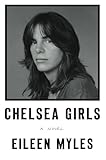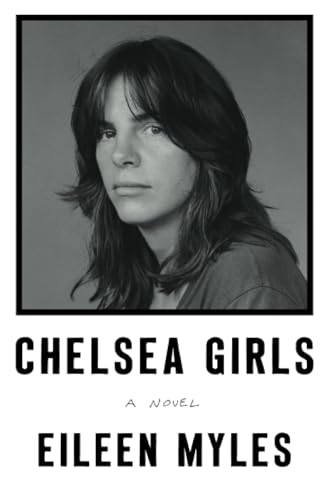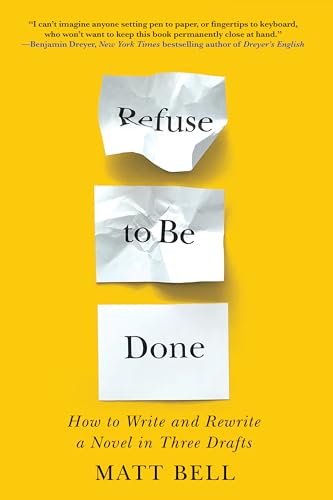
I’d been hearing about Jami Attenberg’s latest novel, All Grown Up, long before it went on sale. Early readers loved it, and their praise produced a kind of roar across the Internet, one full of joy and ferocity. People were grateful for this story and this character: Andrea Bern, a single woman who doesn’t have kids, and doesn’t want them. When I finally got my hands on a copy, I saw what everyone was talking about; Andrea is like so many women I know, and yet, she is unlike most female characters in fiction. She is also more than her demographic (as we all are). Through a series of droll but big-hearted and compassionate vignettes, Attenberg depicts a profound and authentic portrait of a woman as she moves through this beautiful yet often unjust world. In All Grown Up, there is joy, loneliness, pleasure, despair, grief, hope, frivolity, and matters of great import.

 Jami Attenberg is The New York Times bestselling author of five other books, including The Middlesteins and Saint Mazie. She was kind enough to answer my questions via email.
Jami Attenberg is The New York Times bestselling author of five other books, including The Middlesteins and Saint Mazie. She was kind enough to answer my questions via email.
The Millions: All Grown Up is told in a series of vignettes about Andrea’s life — there’s one terrific, pithy chapter early on, for instance, called, simply, “Andrea,” about how everyone keeps recommending the same book about being single. There are a few chapters about Andrea’s friend Indigo: in one she gets married, in another she has child, and so on. Some are about Andrea’s dating life, and others focus on her family. I’m curious about how working within this structure affected your understanding of Andrea herself, seeing as she comes into focus story by story, but not in a traditional, chronological way. I also wonder what you want the reader to feel, seeing her from these various angles, some of which overlap, while others don’t.
Jami Attenberg: I made a list — I wish I could find it now; it’s in a notebook somewhere — of all these different parts of being an adult. For example: your relationship with your family, your career, your living situation, etc. And then I created story cycles around them, and often they were spread out over decades. As an example: what Andrea’s apartment was like when she was growing up versus how she felt about her apartment as an adult in her late 20s versus her late 30s, and how those memories informed her feelings of safety and security and space. A sense of home is a universal topic. And then eventually more relevant, nuanced parts of a specifically female adulthood emerged as I wrote, and little cycles formed around those subjects. So the writing of this book in terms of structure was really an accrual of these cycles.
The goal was to tell the whole truth about this character, and why she had become the person she was — the adult she was, I guess — so that she could understand it/herself, and move on from it. The fact that it’s not linear is true to the story of our lives. The moments that inform our personalities come at us at different times. If you were to make a “What Makes Me the Way I Am” top 10 list in order of importance, there’s no way it would be in chronological order. And to me they’re all connected. I’d hope readers see some of their own life challenges in her, and if not her, in some of the other characters, even if they happen at different times. Everything keeps looping around again anyway. (We can’t escape our pasts, we are doomed to repeat ourselves, we are our parents, etc.)
TM: In my mind, and likely in the minds of others, you lead an ideal “writer’s life” — you’re pretty prolific, for one, and you also don’t teach. You now live in two places: New Orleans and New York City — which seems chic and badass to me. Plus you have a dog with the perfect under bite! Can you talk a little about your day-to-day life as an artist, and what you think it’s taken (besides, say, the stars aligning), to get there? Any advice for writers who want to be like you when they’re all grown up?
JA: It took me a long time to figure out what would make me happy, and this existence seems to be it, for a while anyway. I’m 45 now, and I started planning for this life a few years ago, but before then I had no vision except to keep writing, and that was going to be enough for me. Then, after my third winter stay in New Orleans, I realized I had truly fallen in love with the city. And then I had a dream, an actual adult goal. I had two cities I loved, and I wanted to be in both. So it has meant a lot to me to get to this place. I worked so hard to get here! I continue to work hard. No one hands it to you, I can tell you that much, unless you are born rich, which I was not, and even then that’s just money, it’s not exactly a career. And I think the career part, the getting to write and be published and be read part, is the most gratifying of all. Unless success is earned it is not success at all.
My day-to-day life is wake, read, drink coffee, walk the dog, say hi to my neighbors, come home, be extremely quiet for hours, write, read, look at the Internet, eat, walk the dog, have a drink, freak out about the state of America, and have some dinner, maybe with friends. Soon I’ll be on tour for two months, and that will be a whole different way of living, though still part of my professional life. But when I am writing, it is a quiet and simple existence in which I take my work seriously. I have no advice at all to anyone except to keep working as hard as you possibly can.
TM: I’ve always loved the sensuality of your writing. Whether the prose is describing eating, or having sex, or simply the varied textures of life in New York City, we are with your characters, inside their bodies. What is the process for you, in terms of inhabiting a character’s physical experience? Does it happen on the sentence level, or as you enter the fictive dream, or what?
JA: Well thank you, Edan. I’m a former poet, for starters, so I’m always looking to up the language in a specific kind of way. I certainly close my eyes and try to be in the room with a character, and inside their flesh as well, I suppose. I write things to turn myself on. Even my bad sex scenes are in a strange way arousing to me, even if it’s just because they make me laugh. It’s all playtime for me.
All of this kind of thinking comes in the early stages but also in my final edits of the second draft. Most of the lyricism of the work is done before I send the book out to my editor. Her notes to me address the nuts and bolts of plot and architecture, and often also emotions and character motivation. But the language, for the most part, she leaves to me.
TM: My favorite relationship in the novel is between Andrea and her mother. It’s loving and comforting even though there are also real tensions and conflicts between them. Can you talk about creating a nuanced, and thus realistic, portrayal of mother and daughter?
JA: It is also my favorite relationship! I could write the two of them forever. I am satisfied with the book as it stands but would still love to write a chapter where the two of them go to the Women’s March together, and Andrea’s mother knits her a pussy hat and Andrea doesn’t want to wear it because she only ever wears black. I have pages and pages of dialogue between them that I never used but wrote anyway just because they were fun together, or fun for me the author, but maybe not fun between the two of them.
Their relationship really comes from living in New York City for 18 years and watching New York mothers and daughters together out in the world and just channeling that. These characters are very much a product of eavesdropping. I try to approach these kinds of family relationships like this: everyone is always wrong and everyone is always right. Like their patterns and emotions are already so ingrained that there’s no way out of it except through, because no one will ever win. But also there is love. Always there is love. And that’s how I know they’ll make it to the other side.
TM: This novel has so many terrific female characters, who are at once immediately recognizable (sort of like tropes of contemporary womanhood, if that makes sense) and also unique. Aside from Andrea and her mother, there is Andrea’s sister-in-law, Greta, a once elegant and willowy magazine editor who is depleted (spiritually and otherwise) by her child’s illness; Indigo, ethereal yoga teacher turned rich wife and mother, and then divorcée and single mother; the actress with the great shoes who moves into Andrea’s building; Andrea’s younger and (seemingly?) self-possessed coworker Nina. They’re all magnetic — and they also all fail to hold onto that magnetism. Their cool grace, at least in Andrea’s eyes, is tarnished, often by the burdens of life itself. Did you set out to have these women orbiting Andrea, contrasting her, sometimes echoing her, or was there another motivation in mind?
JA: These women were all there from the beginning — all of them. I had to grow them and inform them, but there were no surprise appearances. I never thought — oh where did she come from? They were all just real women living and working in today’s New York City, and also they were real women who lived inside of me. I needed each of these women to be in the book or it wouldn’t have been complete. And also I certainly needed them to question Andrea. For example, her sister-in-law in particular sometimes acts as a stand-in for what I imagine the reader must be thinking, while her mother acts as a stand-in for me, both of them interrogating Andrea at various times.
And also always, always, always in my work the female characters are going to be the most interesting. Most of the chapters are named after women. I had no doubt in my mind that I wanted a collective female energy to buoy this book. We’re always steering the fucking ship, whether it’s acknowledged or not.
TM: Were there any models for this book in terms of voice, structure, tone of subject? Are there, in general, any authors and novels that are “fairy godmothers” for you and your writing?
JA: Each book is different, I have a different reading list, but Grace Paley is my mothership no matter what, because of her originality, grasp of voice and dialect, and incredible heart and compassion.


 As I began writing All Grown Up, I was reading Patti Smith’s M Train and Maggie Nelson’s The Argonauts, and when I was halfway done with the book I started reading Eileen Myles’s Chelsea Girls. I was not terribly interested in fiction for the most part. I wanted this book to feel memoiristic — not like an actual memoir, that one writes and tries to put in neat little box, perfect essays or chapters, but just genuinely like this woman was telling you every single goddamn, messy thing you needed to know about her life.
As I began writing All Grown Up, I was reading Patti Smith’s M Train and Maggie Nelson’s The Argonauts, and when I was halfway done with the book I started reading Eileen Myles’s Chelsea Girls. I was not terribly interested in fiction for the most part. I wanted this book to feel memoiristic — not like an actual memoir, that one writes and tries to put in neat little box, perfect essays or chapters, but just genuinely like this woman was telling you every single goddamn, messy thing you needed to know about her life.
Those three books all feel like unique takes on the memoir. Patti Smith just talks about whatever the fuck she wants to talk about, and Maggie Nelson writes in those short, meticulous, highly structured bursts, where you genuinely feel like she is making her case, and in Chelsea Girls Eileen has this dreamy, meandering quality, although she knows exactly what she’s doing, she’s scooping you up and putting you in her pocket and taking you with her wherever she wants to go. So all of those books somehow connected together for me while I was establishing the feel of this book.
 And when I was finishing I read Naomi Jackson’s gorgeous debut, The Star Side of Bird Hill, which is also about family and a collection of strong women and coming of age, although the people growing up in her book are much younger than my narrator. But it was just stunning, and it made me cry, and the emotions felt so real and true. So I think reading her was an excellent inspiration as I wrote those final pages. Like you can’t go wrong with heart.
And when I was finishing I read Naomi Jackson’s gorgeous debut, The Star Side of Bird Hill, which is also about family and a collection of strong women and coming of age, although the people growing up in her book are much younger than my narrator. But it was just stunning, and it made me cry, and the emotions felt so real and true. So I think reading her was an excellent inspiration as I wrote those final pages. Like you can’t go wrong with heart.
TM: Since is The Millions, I must ask you: What was the last great book you read?
JA: I just judged the Pen/Bingham contest and all of the books on our shortlist were wonderful: Insurrections by Rion Amilcar Scott; We Show What We Have Learned by Clare Beams; The Mothers by Brit Bennett; Homegoing by Yaa Gyasi, and Hurt People by Cote Smith.















